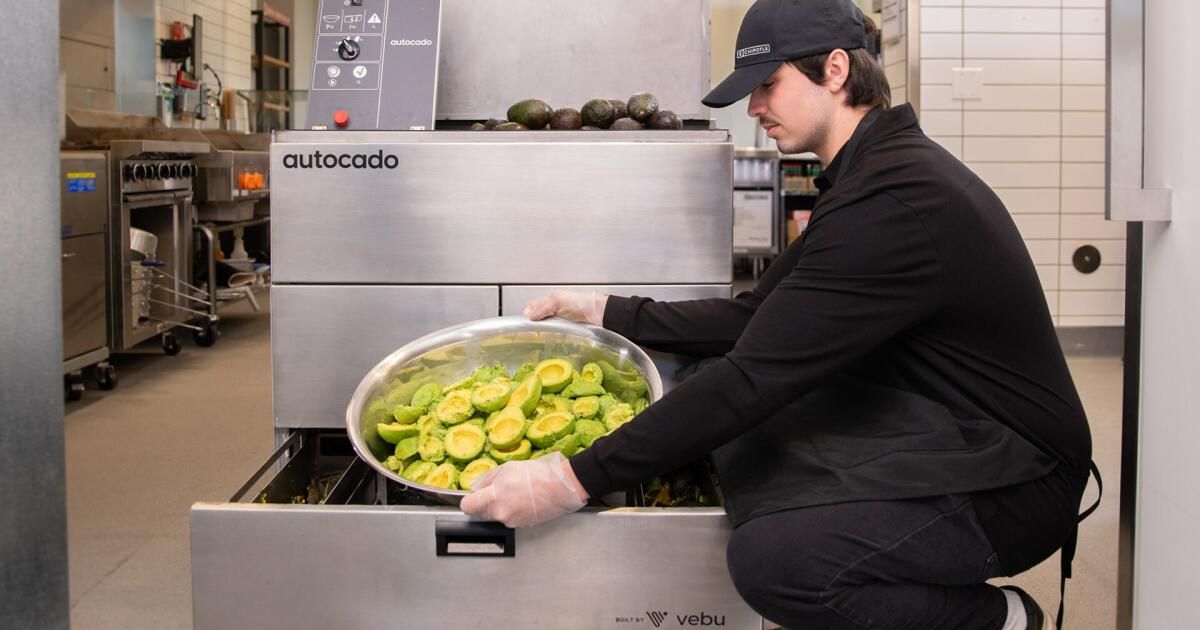Robots that completely de-pulp avocados and assemble burritos are now preparing food for customers at two Chipotle Mexican Grill restaurants in Southern California, as automation and artificial intelligence continue to creep into the fast-food industry and fears of worker impersonation grow.
Earlier this week, Chipotle announced the debut of the robots at two locations in Orange County, where customers can see the “Autocado” in action at Chipotle’s Huntington Beach location on Magnolia Street, and the “Augmented Makeline” at the Corona del Mar restaurant on East Coast Highway.
Chipotle said the machines are part of a pilot program before a decision is made on whether the robots will be deployed elsewhere. Both robots have been in operation for about a month.
Company officials stressed that Autocado and Augmented Makeline are not displacing human workers. “Autocado and Augmented Makeline will not eliminate any jobs,” Chipotle spokesman Tyler Benson said.
Chipotle officials call the new innovations “cobots” because they say the devices work alongside humans.
The Autocado robot can slice, core and peel avocados in 26 seconds on average, reducing the labor required to prepare the restaurant's guacamole so team members can help with other food preparation tasks, Benson said.
Similarly, the Augmented Makeline robot is an automated bowl and salad maker that dispenses rice, lettuce, and other ingredients into a container under the counter, producing Chipotle's famous burrito bowls.
In recent years, several restaurant chains have implemented technology inside and outside their kitchens, part of an industry-wide effort to make restaurants more efficient. Last year, California-based Sweetgreen began testing automation for some food preparation after buying Spyce, a robotic kitchen startup. And fast-food restaurants like Taco Bell have tested AI for their drive-thru locations with mixed results.
Restaurant operators are at a “crossroads” when it comes to implementing technology into their businesses, said Michelle Korsmo, president and CEO of the National Restaurant Association.
“In an economy where there are far more open positions than workers to fill them, operators are leaning toward testing and adopting technologies like robotics, artificial intelligence and automation to streamline their processes while freeing up their employees to focus on the hospitality that is at the root of the industry’s success,” Korsmo said.
Korsmo said restaurant operators tell him how important it is to maintain the human touch in the hospitality offered in restaurants.
A Chipotle employee pours avocado into a large bowl, while the car stands below. Human workers still need to mash the guacamole.
(Chipotle Inc. Mexican Grill)
Chipotle first announced testing of the Autocado about a year ago, describing how the machine works.
First, a human worker loads the machine with a full box of ripe avocados, up to 25 pounds at a time. The latest version of the Autocado recognizes the variability of the fruit and automatically adjusts to fit the size of the avocados being loaded, Chipotle officials said.
“Avocados are placed one by one in an upright position and then transferred to the processing device. They are cut in half. The core and skin are automatically removed and the waste is discarded,” according to the press release. “The fruit is safely collected in a stainless steel container at the bottom of the device.”
A human worker then adds the ingredients and mashes the fruit to make guacamole.
Vebu, a Los Angeles-based startup founded two years ago, created Autocado. Vebu and Chipotle worked with training managers at Chipotle restaurants to identify the most time-consuming and least favorable tasks among workers, Chipotle said.
Hyphen, a San Jose-based startup founded four years ago, created Augmented Makeline.
The restaurant had previously tested another robot called Chippy, which helped cook and season tortillas, but the project was eventually scrapped because the device was too difficult to clean.












